Harmony - The new era of Blockchain

Introduction
In the last 20 years, technology has made great progress, either with the creation of innovative electronic devices that are useful for society today, the invention of cell phones, which facilitates communication between people, different advances technological in terms of health, medicine and many other advances, but one of the most important advances or inventions has been the creation of a new currency, a new way to obtain money, electronically, this is possible with the invention of cryptocurrencies , since the creation of Bitcoin in 2008, but behind this new currency, there is something more hidden, something deeper and that is the basis for users to interact, sell or change their cryptocurrencies, this is Blockchain technology.
Blockchain technology has been modified by many platforms since its creation, they have sought to improve it, alter it, modify it and reprogram it, many have succeeded and others have failed in the attempt, but blockchain technology is a fundamental pillar in terms of cryptocurrencies, is where the reliability of the platforms and users is based, is the system that is responsible for protecting money from hacking, theft or any alteration, it is a totally clean and very protected technology and system, but in turn with the creation of a large number of cryptocurrencies, more than 1600 to today's account, where there are millions of users in turn creating new blocks, nodes and collapsing the system, scalability and speed of movement can become a problem without a doubt any.
In fact, that is one of the big problems that blockchain technology suffers today, when this technology went on the market, its creator always wanted to have a clean and transparent system for all users, for that reason any user is able to see and know the transactions of others, but the problem is the few transactions per second that can be performed, generating a scalability problem.
Other blockchain technologies have emerged such as Ethereum, but without being able to solve the problem of scalability and transactions per second, although the number of transactions per second that can be performed is greater in the Ethereum chain, it remains a number low for users and remains a slow system, which for the scalability and mass adoption of cryptocurrencies is a problem, but in recent years many professionals in the field of technology, experts in economics and technology have joined their knowledge to create a new technology, that's where Harmony arises.

What is Harmony?

Harmony is the new chain of fragmentation blocks that works with the protocol of PoS (Proof of Stake), which in a few years will be the most implemented in the block chain for all the benefits it offers, Harmony has all the potential to solve all the scalability problems that are found today, and with an incredibly high number of transactions per second, this is partly because Harmony addresses the problems of existing blockchains, in terms of transaction speed and operation of the nodes, all this is possible through the fragmentation of the nodes, which generates a lower collapse and greater speed, this is the result of a properly optimized system.
Harmony's contributions to the blockchain
Harmony has come to revolutionize blockchain technology, in addition to wanting to achieve greater adoption of cryptocurrencies and have a greater impact since its launch, these are some of the main features and advances that Harmony has managed to achieve, such are:
Fully scalable: for a perfect adoption of cryptocurrencies it is necessary that they have a scalability, which will in turn achieve an expansion of the market, Harmony makes this possible by fragmenting the blockchain state, starting from Zilliqa also It manages to fragment the network communication and the validation of transactions, because because Harmony fragments the transactions into small parts, it also makes the process faster and more efficient.
Secure fragmentation: one of the main characteristics of blockchain technology is its transparency and reliability, Harmony is responsible for maintaining that reputation so characteristic of the blockchain, the process that makes this possible is distributed random generation (DRG), which makes it unpredictable, insensitive, verifiable and scalable.
Efficient and fast consensus: instead of computers that validate the network and receive rewards related to their computational power, Proof of Stake uses the tokens that the nodes have in their possession, starting from what was previously established, Harmony based on PoS is efficient in In addition, it is linearly scalable and 100 times faster than the PBFT algorithm using the BFT algorithm.
Adaptive PoS with threshold: Harmony has managed to develop an adaptable threshold system, securing the network, this was achieved by keeping malicious punters less than 1/3 of the voting actions in any fragment, so small punters cannot participate in the network or get rewards.
Scalable network infrastructure: to avoid being like the other platforms at all costs, and having problems with scalability, Harmony has developed an infrastructure that is fully scalable, this was possible with the RaptorQ code, with which you can spread blocks of fast way through the adaptive information dispersion algorithm.
Consistent cross-fragment transactions: the basis of a good system or process, is that where even through a complex or new process, there is no margin for error or technical failures, something similar happens in the Harmony cross-fragment process, in the which cross fragments can communicate with each other, in order to achieve consistency of fragment transactions.
How can projects benefit from using Harmony?
Harmony offers a fully scalable blockchain system, this is possible due to the fragmentation implemented by Harmony, with its innovation both with its PoS protocol, which makes energy consumption less and being a possible solution for PoW problems, adding also that Harmony is able to support the emerging decentralized economy.
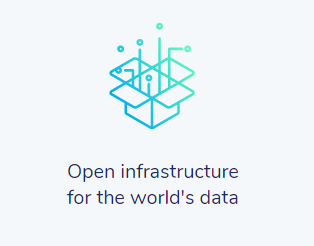
It should be noted that Harmony will offer tools that were previously not feasible in the blockchain, such as high-volume decentralized exchange, through consistent cross-fragment transactions, interactive fair games, Visa-scale payment system and internet transactions things, as one of Harmony's goals is to increase people's reliability, and this can be made possible in the short term with the applications and alternatives they offer in the market.

Harmony has better fragmentation than other networks
Harmony has taken as an example the development of three large platforms, such as Zilliqa, Omniledger and RapidChain, taking the correct points and structures that they have applied, improving them in turn, knowing the mistakes that these platforms have made, in order to solve them and not make the same mistakes.
Zilliqa was the first public block chain based on fragmentation, using the PoW protocol as a tool for identity registration, but in Zilliqa the nodes are fragmented separately, then the fragmented blocks are collected and joined, this being a problem because it is necessary that each node contains the blockchain status in order to process transactions; as for Omniledger, it has worked to prevent corruption of the nodes in the fragments, reorganizing all the nodes in the fragments in a fixed time interval called epoch; on the other hand RapidChain makes use of the Bounded Cuckoo Rule in order to reorganize the nodes without interruptions.
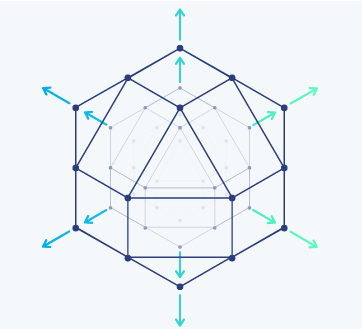
Starting from the above, Harmony takes guidance and inspiration from these solutions, joining them in turn and creating a complete fragmentation scheme passed in Proof of Stake (PoS), which is linearly scalable, something of utmost importance for both the market and for the users; in addition to these solutions incorporated into the Harmony system, they make use of another system such as:
“Harmony contains a beacon chain and multiple shard chains. The beacon chain serves as the randomness beacon and identity register, while the shard chains store separate blockchain states and process transactions concurrently. ”

Improved safety and efficiency with Harmony
Harmony has studied and proposed different approaches to assign nodes in fragments, looking for the best and safest solution, the options were location based fragmentation, centrally controlled fragmentation and randomization based fragmentation, the latter being the safest solution and efficient. But in addition, there are certain characteristics and requirements that the random number must possess, such as:
Unpredictable: for the system to have the required security, it is important that no user be able to predict the random number before it is generated.
Unbiaseable: no user can be sensitive about the random generation process.
Verifiable: something characteristic of the blockchain is its transparency, Harmony is no exception, every random number generated has to be verified by each participant.
Scalable: through the randomization generation algorithm, scalability must be presented to a large number of participants.

Harmony, greater scalability than other platforms
Of the large platforms that use a fragmentation system, known today, Harmony has better scalability and is able to scale linearly. In the case of Omniledger, it uses a distributed generation process (DRG), capable of dividing the participating nodes into multiple groups, but it is practically slow to even qualify as scalable. RapidChain uses a Verifiable Secret Verification (VSS) system, but it is not secure because malicious nodes are able to send inconsistent shares to different nodes present in the network.
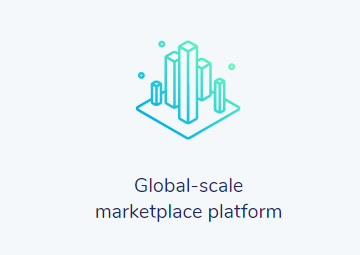
Harmony includes to its system the strengths of the aforementioned platforms, to a large extent the strong point is the generation of scalable randomization with VRF and Verifiable Delay Function (VDF); Harmony with its DRG, compared to other systems, its magnitude is faster, also unlike the RapidChain Verifiable Secret Verification (VSS) approach, and finally, Ethereum 2.0 uses what is the Verifiable Delay Function (VDF) ), which is a newly invented cryptographic primitive, for its part Harmony uses the BFT consensus, thereby providing purpose to the random number and improving the Ethereum 2.0 solution.

Staking-based Sharding - Validator Registration
Harmony has decided to be a revolutionary and adopt a different approach to others, in the case of many platforms, such as Zilliqa, Bitcoin, Ethereum or Quarkchain, use PoW as a consensus to avoid Sybil attacks, an important consideration in terms of security in the blockchain for its part, Harmony has chosen to use Proof of Stake (PoW) as a registry for the validator register or Sybil attack prevention mechanism.
In order to be part of the Harmony validator team, the user has the task of betting or investing a certain number of tokens in order to qualify as a validator, as is well known in the PoS consensus, the holders temporarily put their tokens in a smart contract blocked until the staking process is finished, and in return, they confirm the transactions and receive rewards based on the amount of tokens wagered in the operation, in addition the number of chips wagered will determine the number of voting shares assigned to the validator.
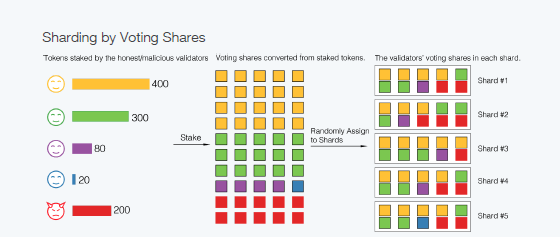
"The stakers obtain voting shares proportional to their staked tokens. Voting shares are then randomly assigned to shards. Stakers become validators for the shard(s) where their voting shares are assigned."

How to avoid malicious validators?
First you have to know the attacking models that exist, you can say that there are three models, which are:
1. Static Round-Adaptive: where attackers can only corrupt a subset of nodes at a predetermined stage. Elastico assumes attackers can only corrupt nodes at the beginning of each epoch.
2. Slowly Adaptive: where attackers can corrupt a subset of nodes over time during the epoch.
3. Fully Adaptive: where attackers can corrupt a subset of nodes instantaneously and at any time.
Like Omniledger, Harmony assumes the slow corruption model, in the case of Omniledger, they avoid the attack by replacing the validators in all the fragments in each era; but this model in turn brings with it two problems, a high cost of bootstrapping in each era and the possible infiltration of security when the nodes are being replaced during the consensus, but now Harmony has studied these problems and the alternatives, managing to solve these problems through an adoption of Cuckoo-rule based resharding mechanism.
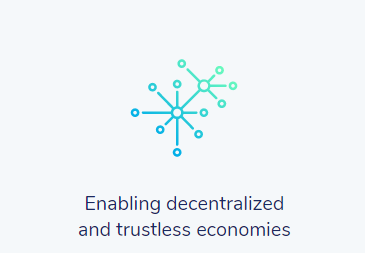
With Cuckoo-rule based resharding mechanism, at the end of each epoch the validators who leave their participation, will be expelled from the network, on the contrary, those users who keep their bets will remain part of the network, something similar happens with the new validators , these will obtain new voting shares, which will be assigned to the fragments that have more than half of the shares entitled to total votes, each new validator must first download the current state of the fragment to begin validating transactions quickly; with this scheme proposed by Harmony, voting actions can be kept balanced in all the fragments, thus avoiding malicious validators.

Harmony's key points
Shard Chain
"A fragment chain is a blockchain that processes and validates its own transactions and stores its own state." Although many think that a chain of fragments is partly independent, it is necessary for proper functioning that these are communicated with other chains of fragments in order to avoid errors or problems, because communication between fragments is a key component of any chain of fragments. blocks, this by communicating cross fragments. Categories between fragments:
Driven by the main chain: which depend on it to be able to achieve transactions between fragments.
Driven by the client: the client has an additional charge, which is not entirely desirable, since he is in charge of the messages between fragments being collected and sent to the fragments by the client.
Driven by fragments: they are sent directly by the nodes in the fragment without external help.
Harmony as a proposal to solve these problems, opt for the Kademila routing protocol, which is the ideal to reduce the complexity of communication, thus achieving better communication between fragments, this is because for Harmony, the absence Freight for customers is of great importance, in addition to wanting to solve costs in the general network.
Beacon chain
"The Harmony beacon chain is a special blockchain that serves additional purposes compared to fragment chains." The beacon chain is of vital importance for the correct functioning of the Harmony structure, since the beacon chain is in charge of general random number and accepting bets, being the chain where the chips are deposited for those users who want to become in validators.

Scalability, fragmentation, security and innovation - Harmony
They are one of the features that Harmony comes to offer, for a project to succeed, it will depend largely on the team behind the project, in the case of the Harmony team, it is made up of engineering experts and business minds who have come together to build something better. Starting from the success of several other platforms, Harmony has taken the best of each of them and applied it to its technologies, also knowing the weaknesses of the other platforms and seeking to improve them, adding in turn technology never seen before, reaching to be revolutionary in the blockchain, and with a view to the future with its consensus of Proof of Stake and fragmentation of the nodes, generating linear scalability and continuing and reinforcing security, which is a characteristic of the blockchain.

Case of use

Dave is a new user in the cryptocurrency market, he has studied a lot in recent years about the operation of the blockchain, its safety, scalability and efficiency, unfortunately Dave is aware of the improvements that the blockchain requires, with few transactions per second, causing the network to collapse, as well as scalability problems, because the greater the adoption by users, the slower and heavier the network will become.
Dave finds and reads about Harmony, a new blockchain with cross-fragmentation process and Proof of Stake (PoS) consensus, which in turn makes energy consumption less, Dave digs deeper and knows all the Harmony benefits, so without hesitation, he wants to be part of the node validators in order to make a profit and help Harmony continue to grow in order to achieve greater adoption in the market.

Team Harmony
Investors
Partners
Harmony Roadmap 2018 - 2019
Token - Harmony

Conclusion
This publication presented has been to inform you about this innovative project, which is Harmony, and how through the content presented in this publication, you can know what Harmony is, its main features and the visions that this platform has and that without a doubt, Blockchain innovation will have a great reach in the market.
And it is that Harmony offers the solution to many of the problems that are found today when talking about the blockchain, problems with scalability, energy efficiency, low number of transactions and malicious validators are the problems that Harmony has been responsible for solving , to achieve this way, a safer, more efficient and scalable blockchain.

Additional Resources
Harmony Website
Harmony OnePager
Harmony WhitePaper
Harmony Medium Blog
Harmony Telegram Group
Harmony Twitter
Harmony LinkedIn
Harmony Instagram










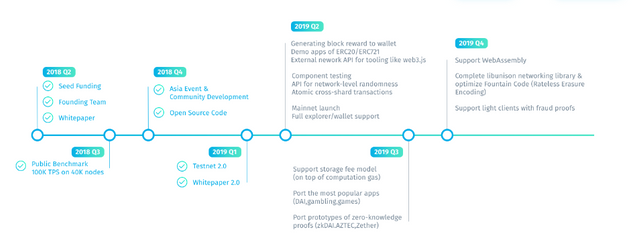
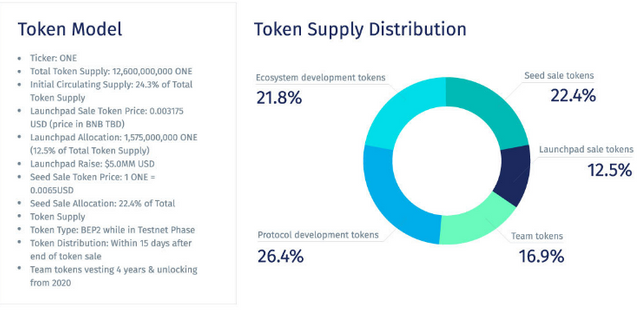
Hey Garlam - Head of Marketing at Harmony here - really love the article and was wondering if you'd be open to more work as one of our writers!
Message me on telegram - @garlamw (and yes it is the real me - check my twitter to verify my telegram id - https://twitter.com/GarlamWon)